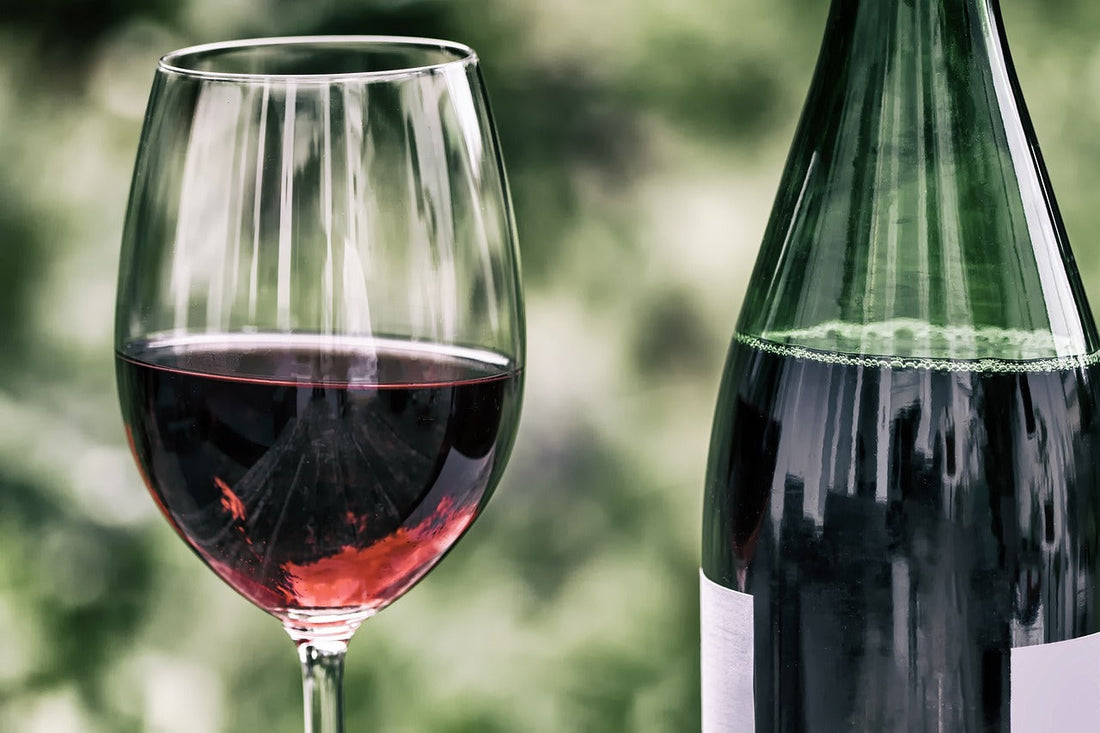If you are a wine lover, you might not only take an interest in wine flavours. The origins and shapes of the glass bottles might catch your fancy. In fact, wine connoisseurs and experts can quickly identify the finest wines. It is easy for them, from the shape and origin of the wine bottles.
These uniquely shaped glass bottles also followed specific distribution channels over the centuries. It further contributed to the popularity of each brand and the shape of these glass bottles.
Key Features of Glass Bottles for Wine

Sizes, thicknesses, and shapes of wine bottles vary. The sizes of these glass bottles are in the range of 18.7 cl to 30 litres. There are 15 known sizes of wine bottles, and each of them has a unique name. But typical modern bottles of wine are 75 cl glass bottles that are convenient to store and handle.
For the curious, the list below shows the first 12 sizes of glass bottles for wine in increasing volume:
|
Volume |
Name |
|
18.7 cl |
Split/Piccolo |
|
37.5 cl |
Demi/Half |
|
75 cl |
Standard |
|
1.5 litres |
Magnum |
|
3 litres |
Double Magnum/Jeroboam |
|
4.5 litres |
Rehoboam |
|
5 litres |
Bordeaux Jeroboam |
|
6 litres |
Impériale/Methuselah |
|
9 litres |
Salmazar |
|
12 litres |
Balthazar |
|
15 litres |
Nebuchadnezzar |
|
18 litres |
Melchior |
|
20 litres |
Solomon |
The shape of glass bottles for wine depends on 3 important factors:
- The variety of grapes used;
- The region where it originated from; and
- The prevailing conditions that influenced its creation
The bottoms of wine bottles are also concave and wide. The bottom, also called the punt, helps the glass bottle maintain balance. Thus, the punt makes it easier to lift and pour the contents of these glass bottles. The punt also gives added strength to the fascinating glass bottles.
None of these physical characteristics affect the quality of the wine itself.
The Top 5 Shapes of Glass Bottles for Wine and Their Origins
The following are the 5 most popular glass bottles for wine recognised across the globe:
- Bordeaux
- Champagne
- Burgundy
- Rhône
- Alsace/Hock
Burgundy, Champagne, and Rhône bottles have somewhat similar shapes.
Bordeaux Bottles

Bordeaux is a region of France known for its special Bordeaux grapes and red wines. Bordeaux bottles are the most widely used worldwide. You can identify them by their tall, straight sides and high shoulders. This unique shape favoured the stacking of Bordeaux bottles in boats, far back then.
Bordeaux grape wines and bottles have travelled far. The Syrah brand of Bordeaux wines changed its name to Shiraz. Then it became a favourite all over Australia. The Malbec also became popular in Latin America. Again, the Merlot and Cabernet Sauvignon brands became California's top choice.
The popularity of Bordeaux white wines goes as far as South Africa and New Zealand. These include the Chenin Blanc, Sauvignon Blanc, and Semillon brands.
Champagne Bottles

Champagne has its origins in France. It is a carbonated variety of wine; hence it produces bubbles. Champagne glass bottles have a long, curvy neck and a curved body. These are pointers to the hand-blowing production process of its bottles. They are also thick, heavy, and wide. The neck prevents bubbles from escaping the bottle. These glass bottles can also withstand the high pressure of their carbonated contents.
Burgundy Bottles

Hand-blowing could well be the method for producing Burgundy bottles as well. Like the Champagne bottle, they have curved bodies and sloppy necks. A Burgundy bottle has a shorter neck and width, and less thickness, than that of a Champagne bottle. Well-known brands of Burgundy wine include Chardonnay and Pinot Noir. But these glass bottles also preserve related varieties of grape wines. Such varieties are grown in Greece and Italy.
Rhône Bottles

Rhône bottles are French wines from the Rhône valley. They have straight, tall sides and longer necks than Burgundy bottles. They are also not as thick as either Burgundy or Champagne glass bottles.
Brands of red wine like the Marsanne, Syrah, Viognier, Grenache, or Roussanne come in Rhône bottles. These types of wines are good to drink while they are still young.
Alsace/Hock Bottles

Alsace bottles (also called Hock, Rhine or Mosel) are slender and tall bottles with long necks. The long neck stops sediments from flowing into the wine glass. The narrow shape of this bottle also preserves the dry and sweet taste of the white wine inside it.
These are elegant and beautifully shaped bottles. They are famous vessels for notable brands of white wines. They include the Pinot Gris, Gewürztraminer, Gruner Veltliner, and Riesling. Alsatian wines are native to Alsace in France. Wine makers in Austria, Hungary, and the Rhine region of Germany also produce them.
Alsatian wines travelled on the Rhine river to their destinations. Thus, the slender shape of Alsace bottles could fit better into the hulls of smaller ships. These ships could better travel on rivers.
Final Words
There is a close connection between a brand of wine, its origin, and the shape of its glass bottles. Well-known brands of wines are popular not only for their content. But also for their bottle shapes, unique flavour, and smell of the wines. The shape of a bottle of wine may be more functional than serving a visual appeal alone.
Many shapes and sizes of bottles for wine exist. But the most common one remains the 75 cl size, which is easy to pour. In any case, these different shapes do not affect the wine quality.

